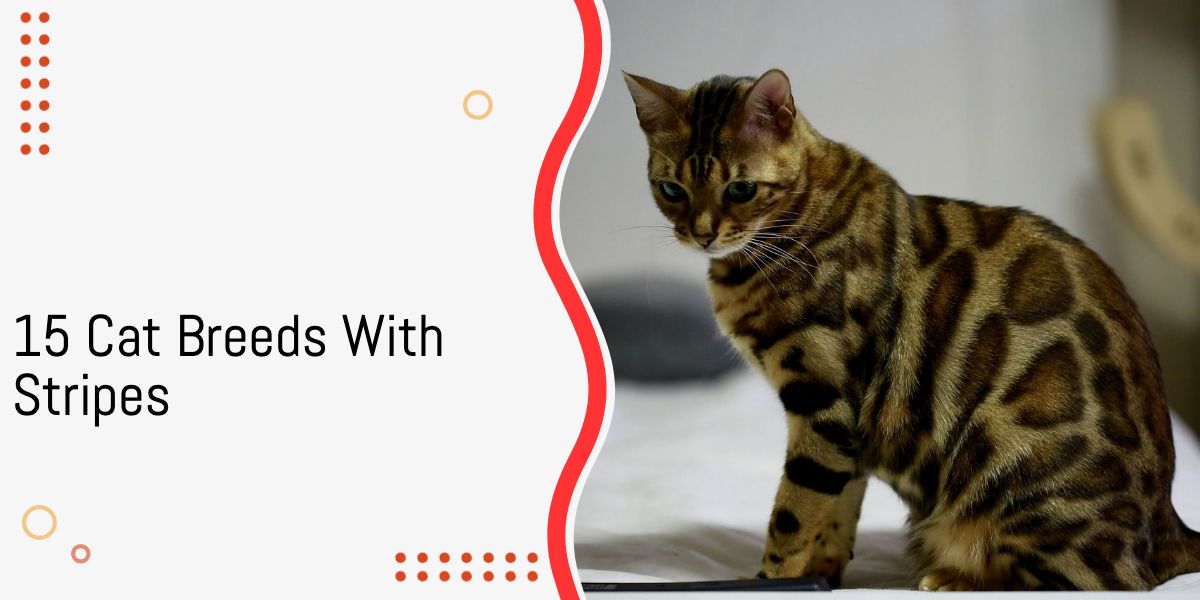Tigers, zebras, hyenas, and wasps—there’s something about stripes that can make a creature seem exotic and fierce.
Does the theory hold with cute kitties?
Looking at cat breeds with stripes should help answer this question. Let’s check them out!
Table of Contents
1. Toyger
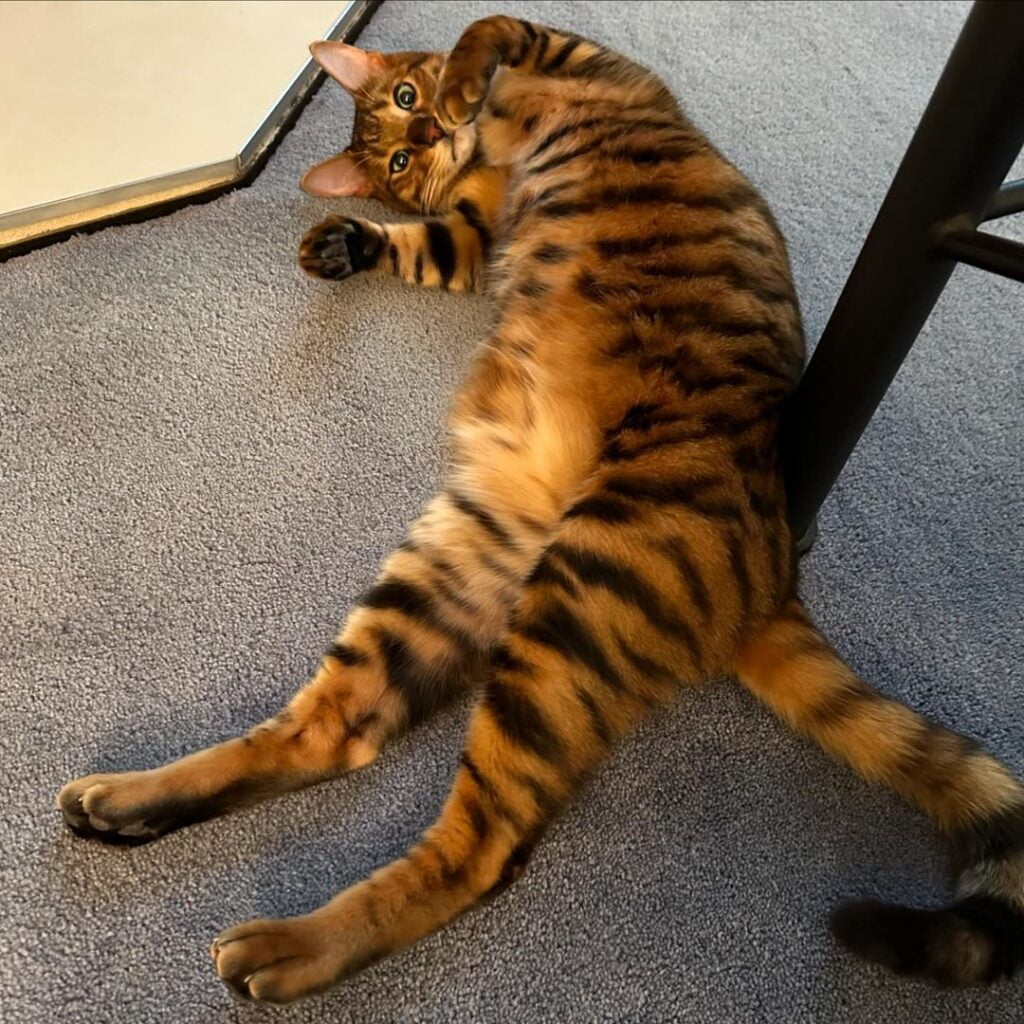
- Shorthaired
- Silky and glittery coat
Petting this little fella is as close as you’ll get to petting a tiger without being ripped to shreds.
Compared to typical tabbies, Toygers have more stretched stripes. Plus, the orange background helps the markings pop!
Don’t let the bold look intimidate you, though. These cats are typically friendly and outgoing.
2. Bengal
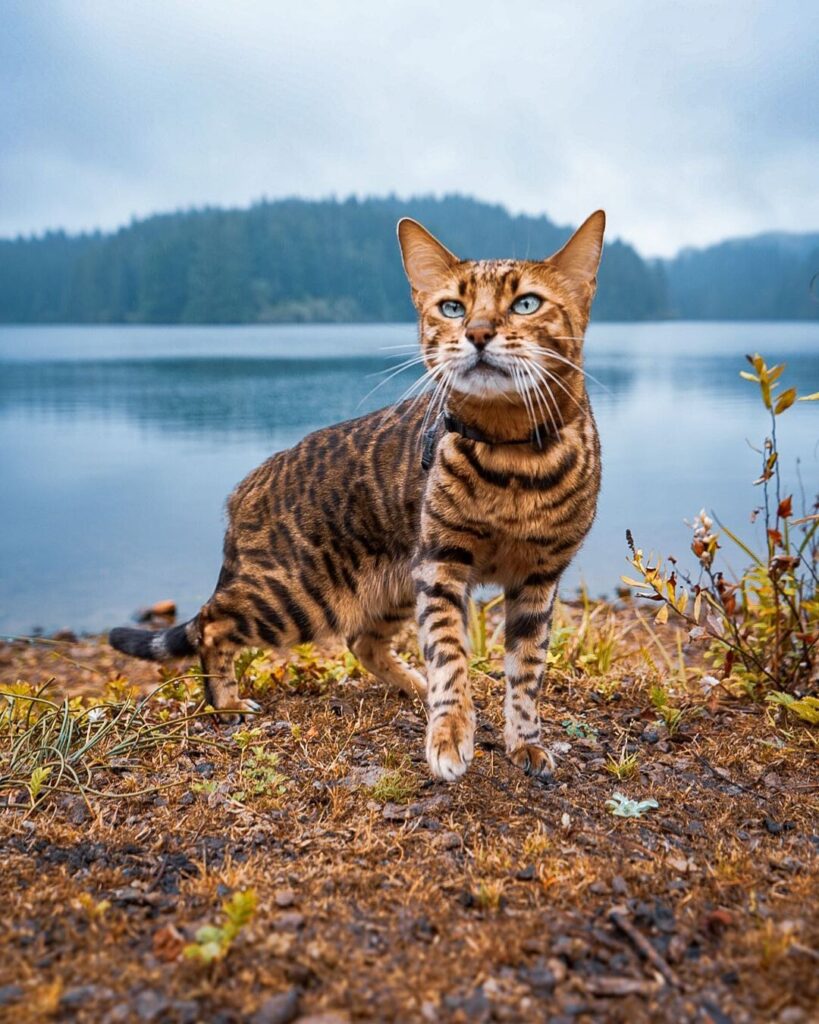
- Shorthaired (and longhaired variant)
- Soft coat with a sheen
Standard Bengal coats are usually spotted with rosettes like that of wild cats. However, there might be a bit of random stripping on the limbs and neck.
So, you could say that the Bengal cat’s coat is somewhere between a Leopard and your average brown tabby—something exotic and something domestic!
And I’m not just saying that.
The breed is the result of crossing the spotted Asian leopard cat (Prionailurus bengalensis) with a domestic cat.
3. Egyptian Mau
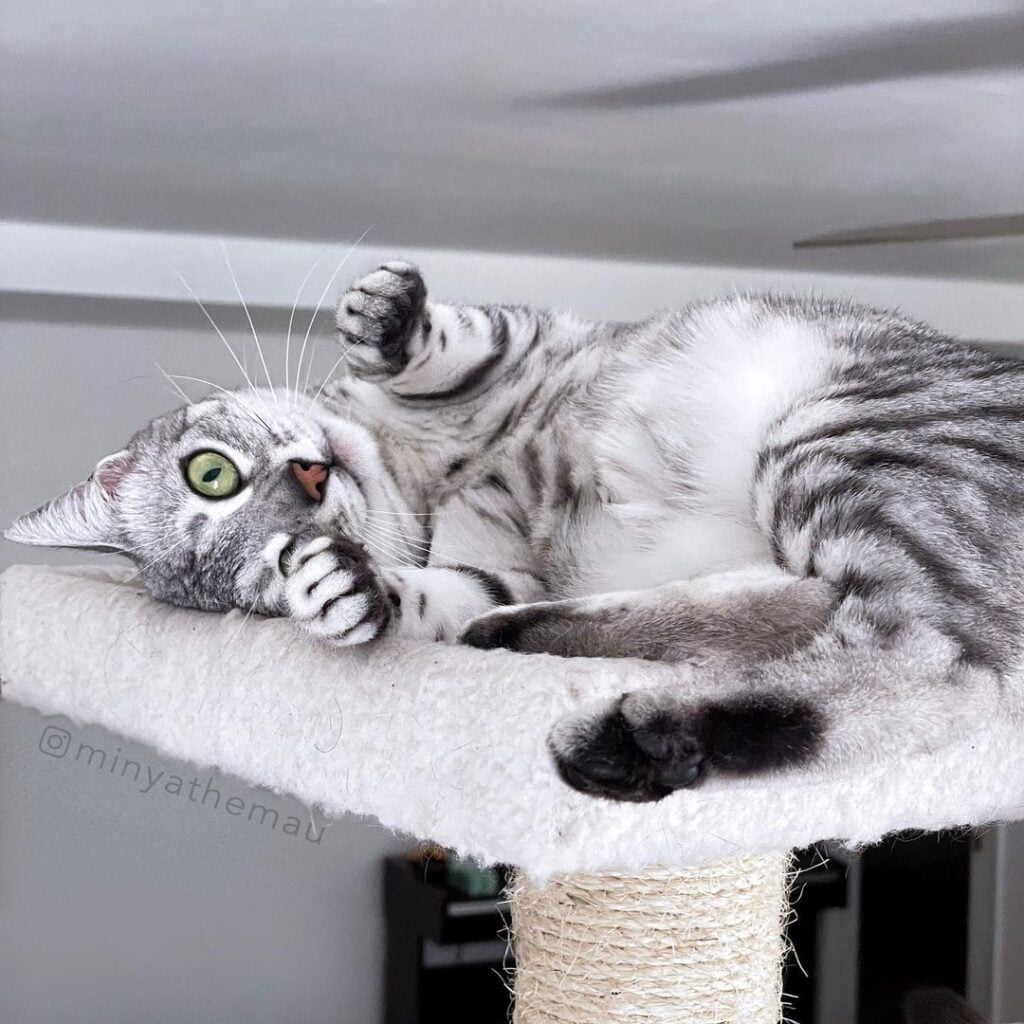
- Shorthaired
- Silky, fine coat
Elegant, alert, and playful—that’s your typical Egyptian Mau. However, when it comes to the coats, no two Maus are alike.
On the shoulder and legs, the cat could sport a combination of spots and strips. The torso might not match, though.
4. Manx
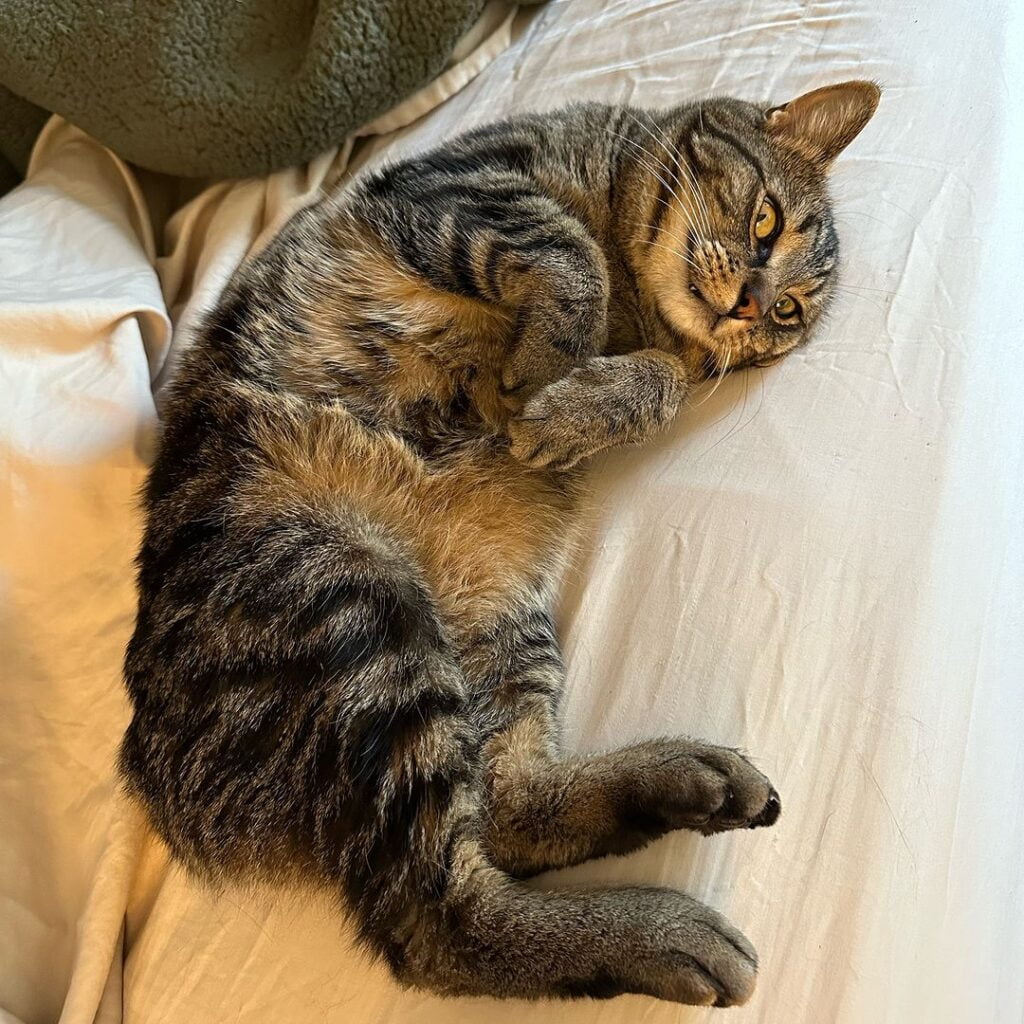
- Shorthaired (longhaired variants are called Cymrics)
- Plush, silky double-coat
What has dramatic markings and zero tail?
Both the Manx and the Cymric (AKA the Manx breed group).
So, the moment this guy turns around, the bold coat is no longer the topic of interest. Everyone will be talking about how this kitty is missing his tail.
Also Check: 9 Indoor Activities For Cats Keep Them Entertained
5. Oriental
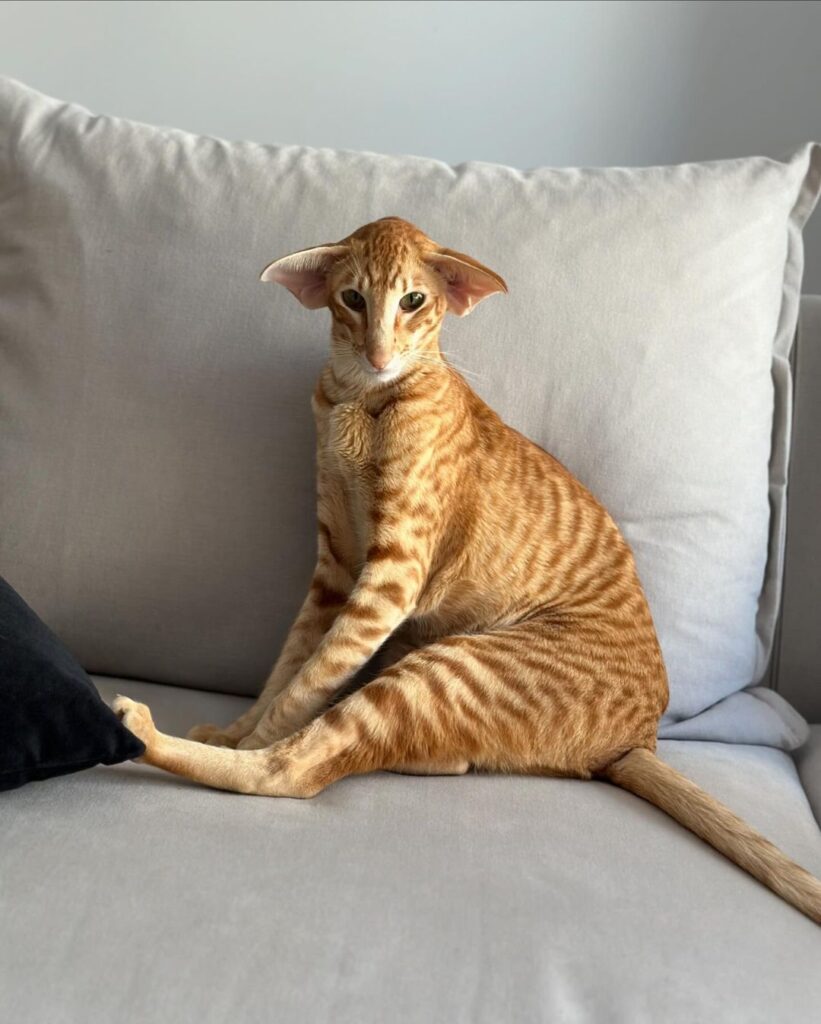
- Shorthaired (and longhaired variant)
- Smooth, silky coat
It’s hard to believe that a breed derived from the Siamese (which comes in limited coat colors/patterns) could be this diverse. But that’s what cross-breeding will do to a creature’s genetic variation.
Today, Oriental cats come in nearly all colors and patterns, including classic and mackerel tabbies.
6. Persian
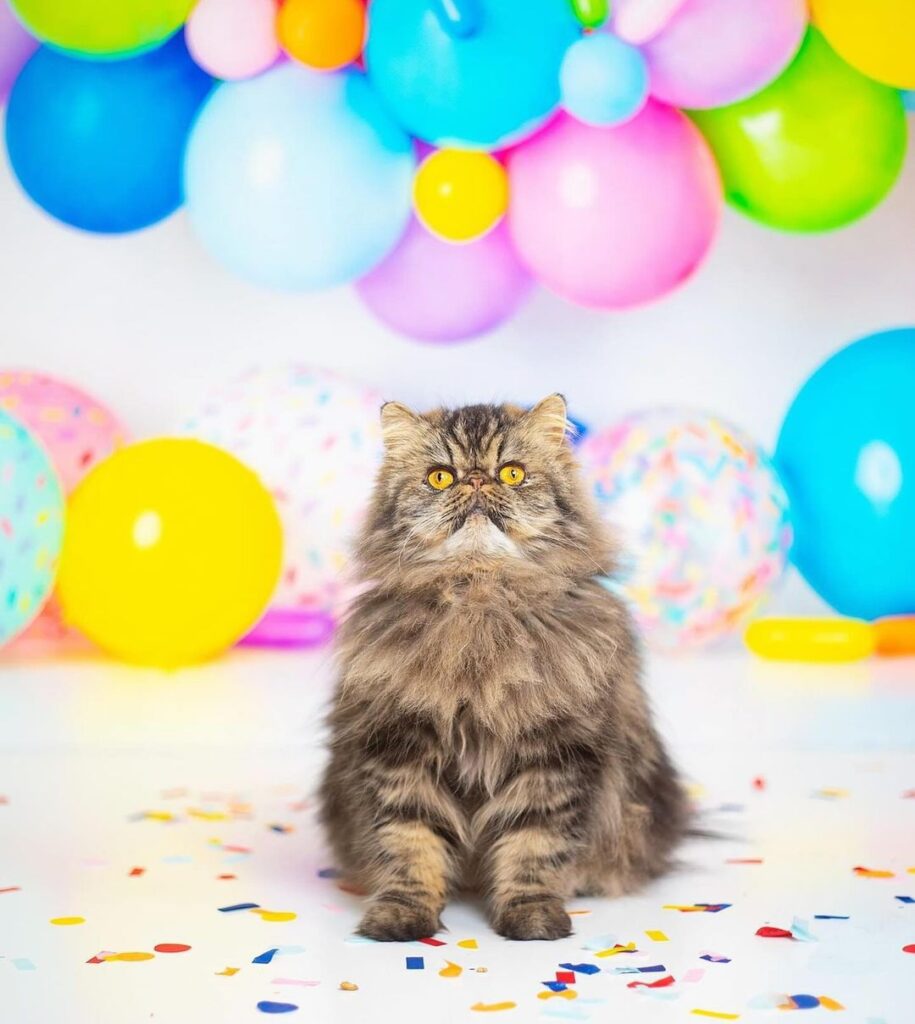
- Longhaired
- Fluffy with dense undercoat
Persians are total floof balls, which makes it harder for any coat pattern to show.
If you’re lucky, your Persian will sport thin stripes running from the spine and down to the (oh-so-fluffy!) belly.
Fair warning: Persian coats need regular grooming. Otherwise, their pretty coats will mat!
7. Maine Coon

- Longhaired
- Cottony, silky, or shaggy double-coat
Do you think the “Coon” in “Maine Coon” refers to actual raccoons?
Well, the urban legend says the majestic breed is a cross between semi-wild felines and raccoons. But that’s just a myth, and a genetically impossible one at that.
Yet, busting that myth doesn’t change the fact that many Maine Coons have been blessed with long, brown-tabby coats with raccoon-like stripes.
8. Ocicat
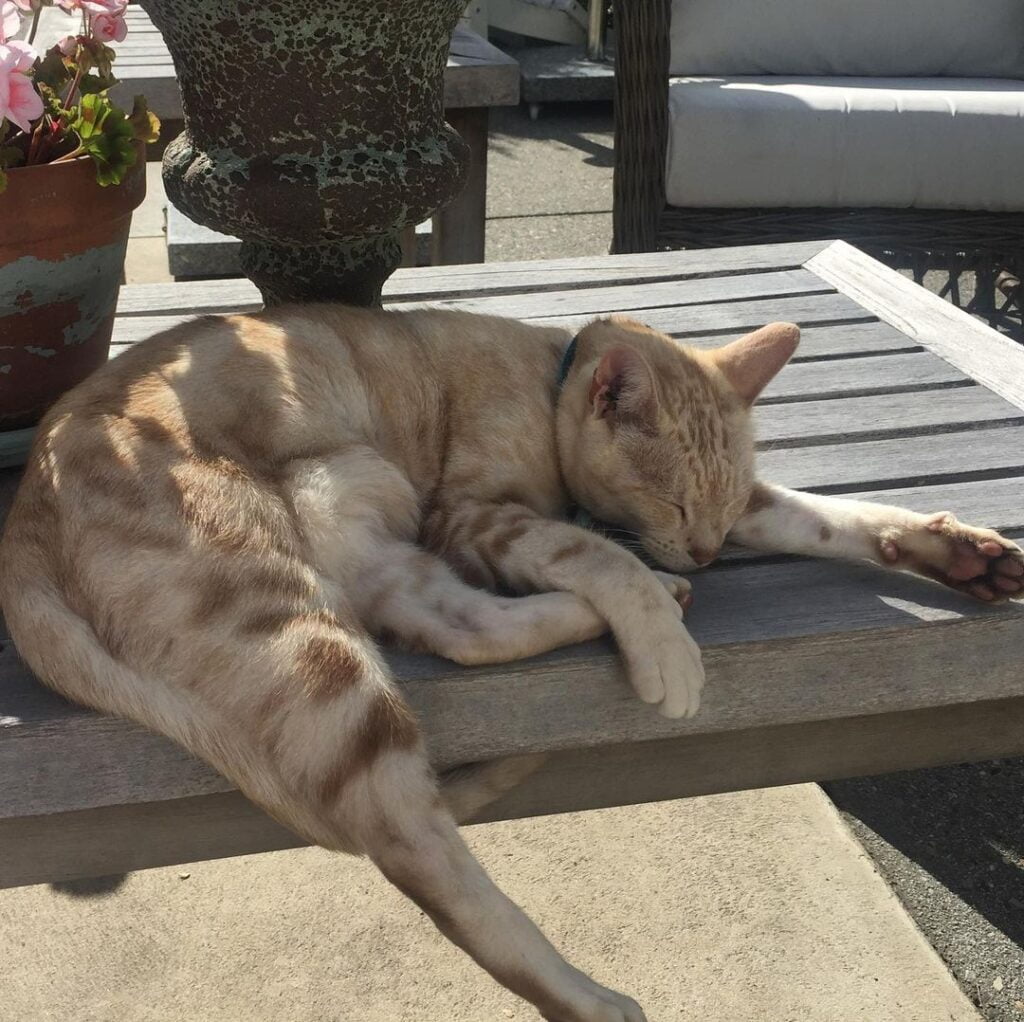
- Shorthaired
- Dense (but low-maintenance) coat
Ocicats are typically spotted, which makes them look a bit wild. However, you could find one with a domestic-looking pattern of tabby stripes.
Either way, Ocicats are affectionate, outgoing, and as devoted as can be!
9. American Bobtail
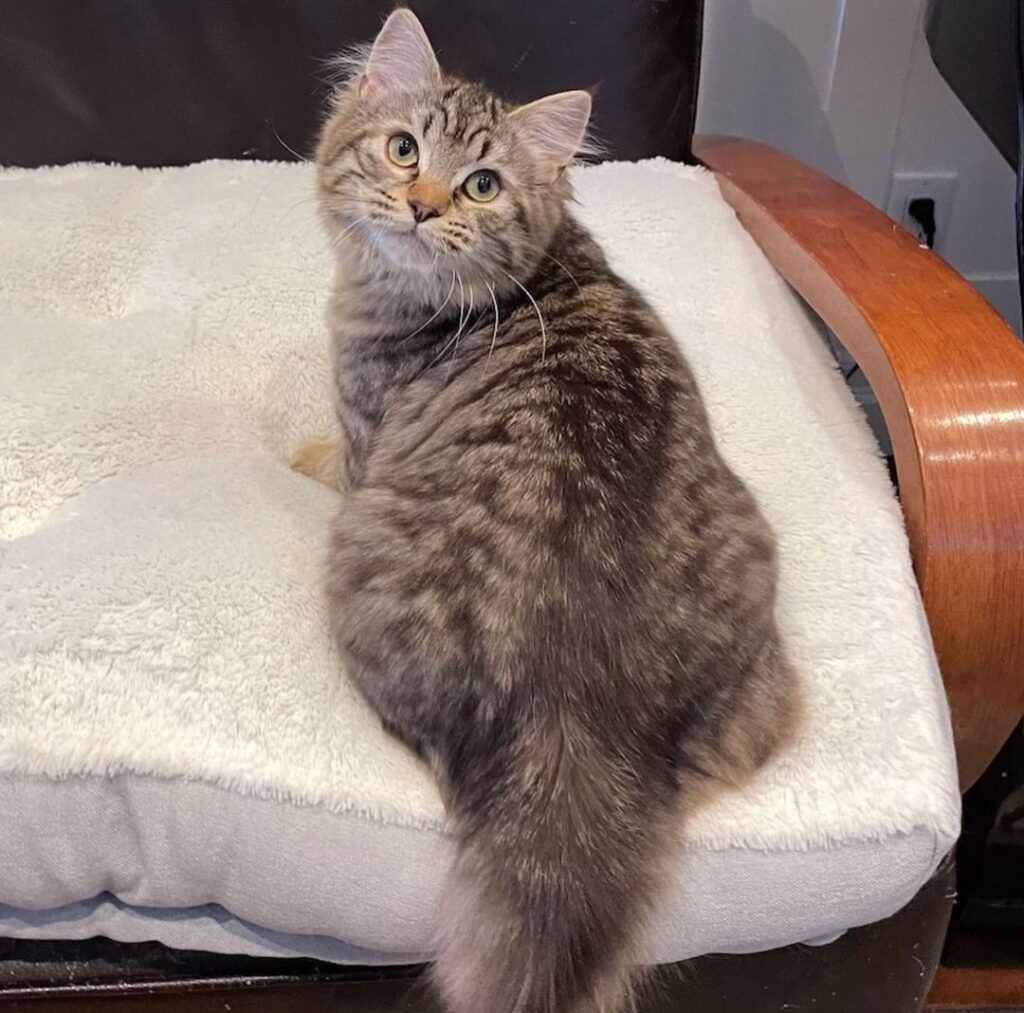
- Shorthaired or longhaired
- Short and dense or long and shaggy
Wild is the name of the game with Bobtails.
American Bobtails come in a whole lot of colors and patterns. Yet, the breed standards favor wild colors (think fawn and silver) with bold lynx-like markings.
10. American Curl
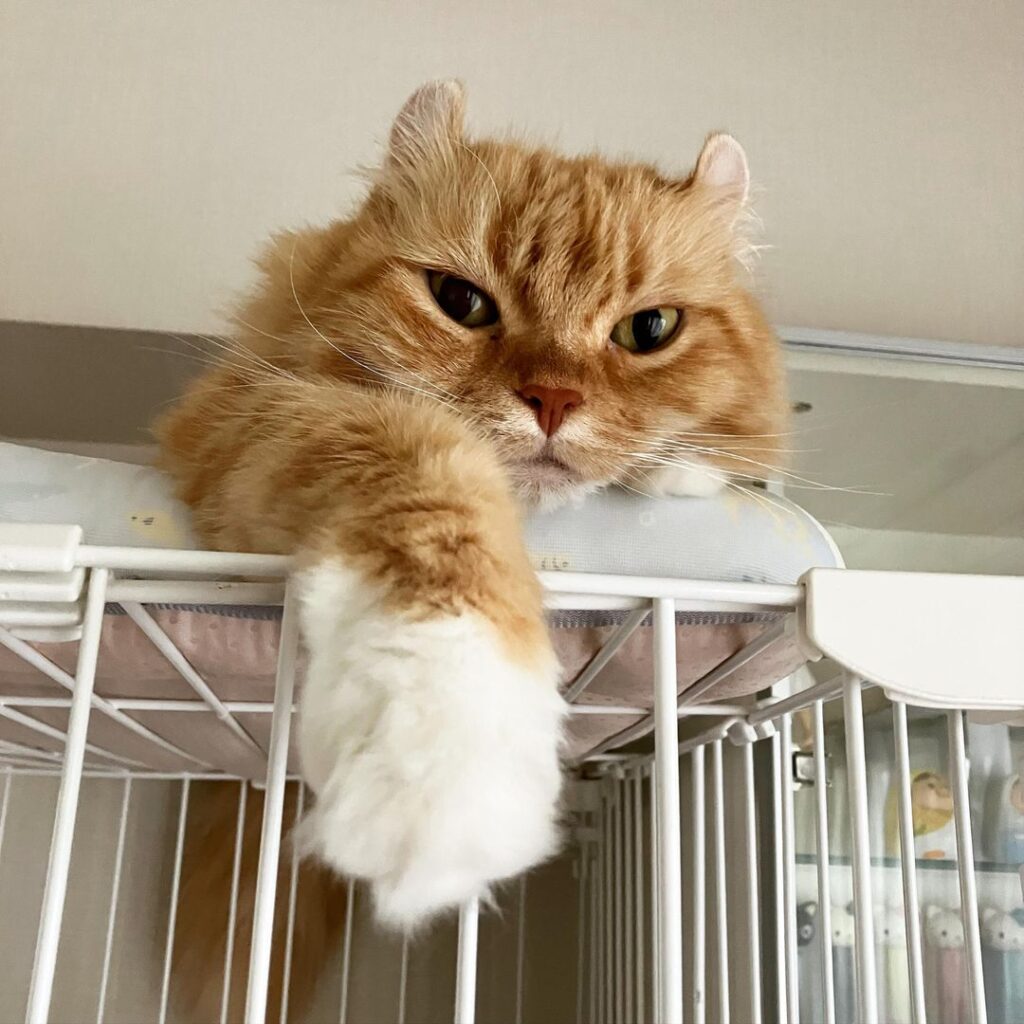
- Shorthaired or longhaired
- Silky hair without much undercoat
American Curls can be nearly anything—striped tabbies, torties, tuxedos, calicos, or even fictitious boys with never-ending childhoods.
Seriously.
These curled-ear cats are nicknamed “Peter Pan” because they preserve their fun-loving kitty persona well into adulthood.
11. American Shorthair
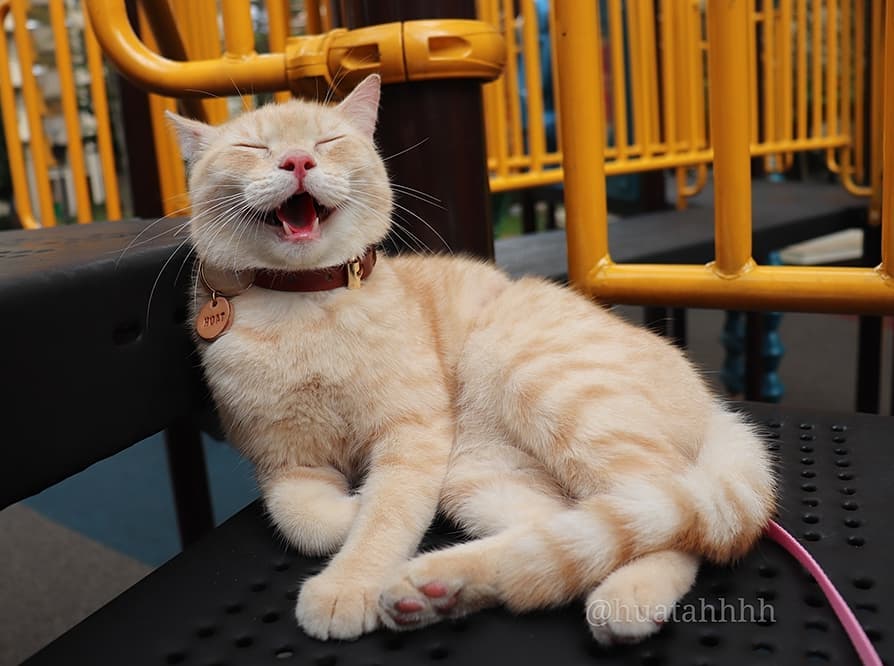
- Shorthaired
- Thick, smooth coat
A good chunk of American Shorthairs are tabbies. And while all of them are pretty, some have “better” coats than others.
You see, the pigment affects the texture. Brown tabbies usually fit the “ideal” criteria—at least according to The International Cat Association (TICA).
But this handsome guy doesn’t care one bit. He’s wearing his cream-colored coat with all the pride in the world.
12. American Wirehair
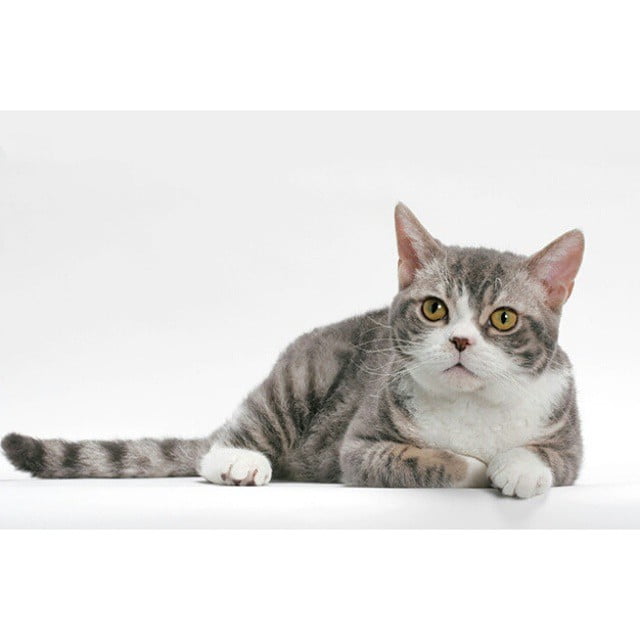
- Shorthaired
- Wiry, springy coat
The American Wirehair has a few traits in common with the American Shorthair, including the easy-going personality.
The key difference here is the coat texture. Wirehair coats could be anywhere from curly to spiked and crimped.
Related: How To Stop Your Cat From Biting You: 11 Tips And Tricks
13. Siberian
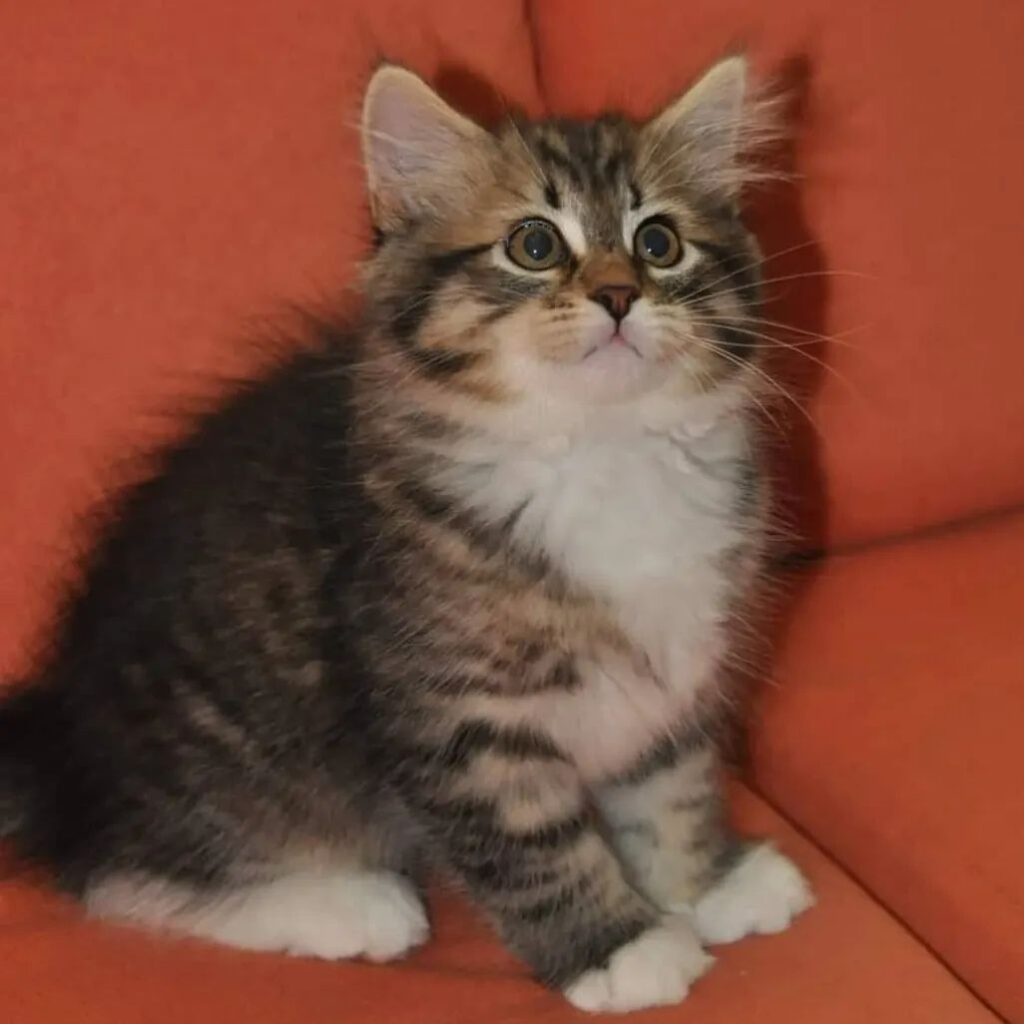
- Longhaired
- Thick triple coat
Siberians are fluffier than your typical longhaired cat.
They’ve got a short, dense undercoat, a middle layer of awn hair, and a long coat of guard hair. There’s a bit of collar ruff, too.
So, don’t be surprised if your kitty’s markings get lost between all that fluff as she grows older.
14. Norwegian Forest Cat
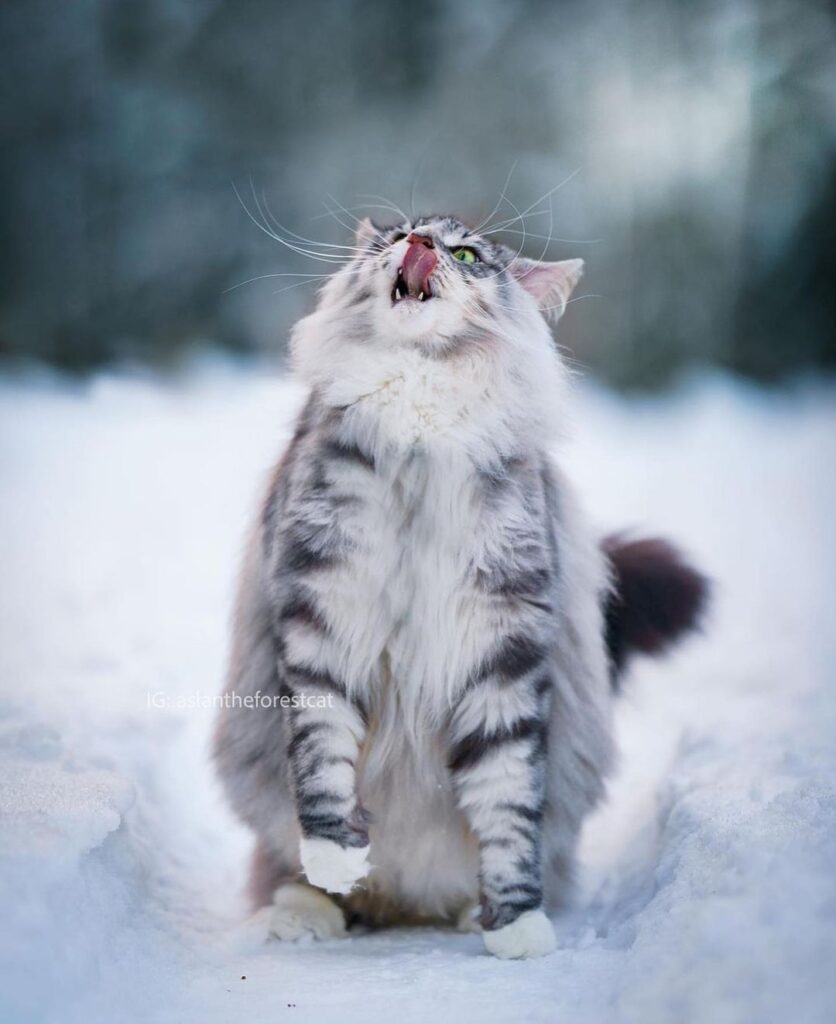
- Longhaired
- Dense with wooly undercoat
Norwegian Forest cats are intelligent, resourceful, mild-mannered, and occasionally striped like tabbies.
However, this isn’t just any tabby coat. It’s water-resistant and insulating, which must be a blessing once the harsh Scandinavian winter rolls in.
15. Savannah

- Shorthaired
- Not much undercoat
Cross a serval (a spotted wild cat) with a domestic cat, and you’ll get an F1 Savannah. The “F” designation is for filial generation, which is a way to indicate how distanced one generation is from the wild ancestor.
So, within this rare breed, an F2 Savannah has a serval for a grandparent, an F3 has a serval great-grandparent, and so on.
The beauty in the picture is an F5.
Is she spotted? Is she stripped? Who’s to say?
Final Thoughts
It turns out that stripes could make a kitty seem majestic, goofy, or exotic.
Which do you think pulls off the striped look better? Longhaired furballs or shorthaired beauties?

